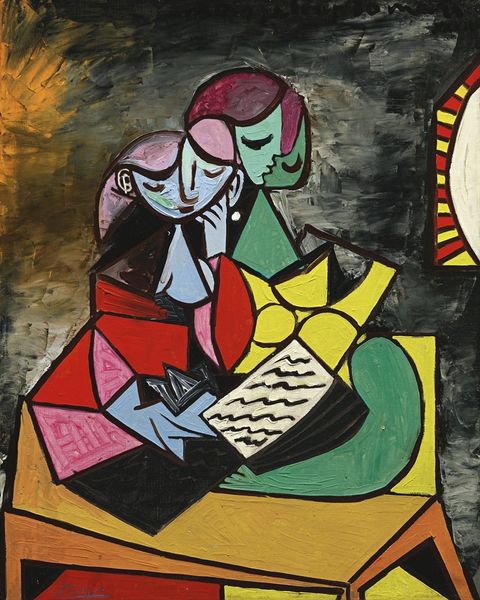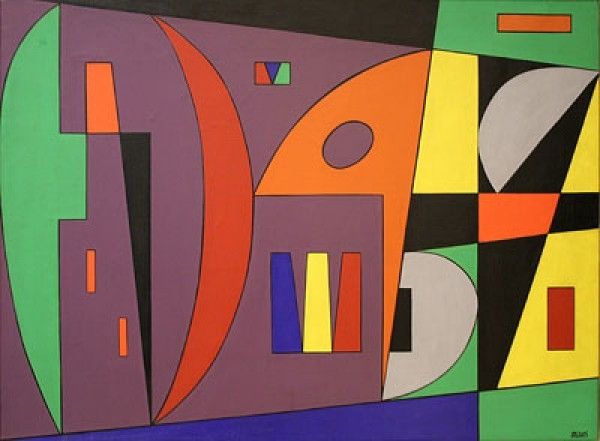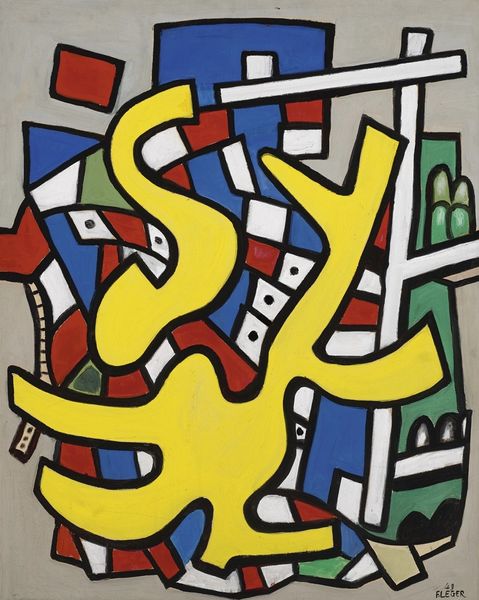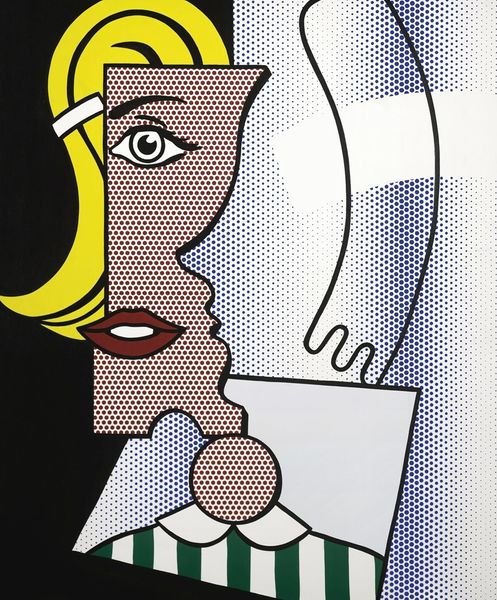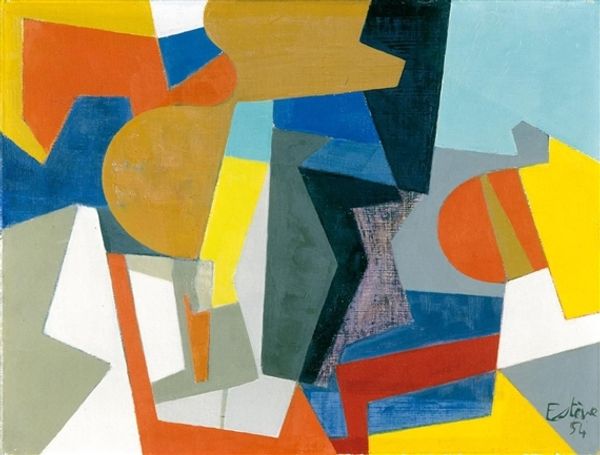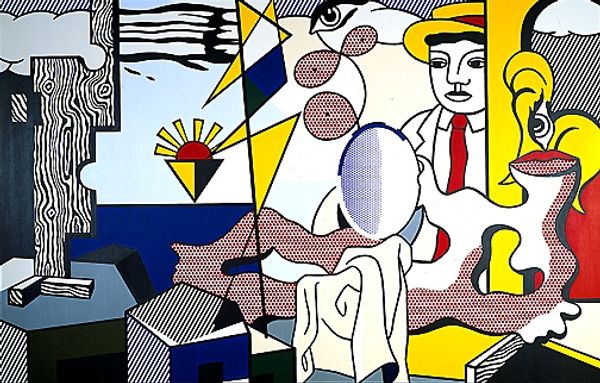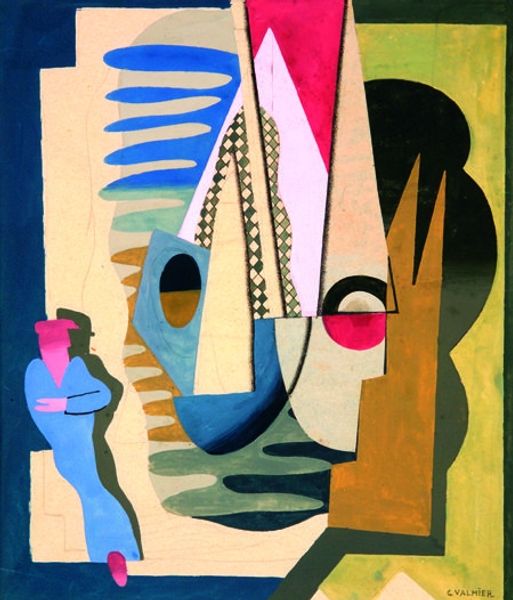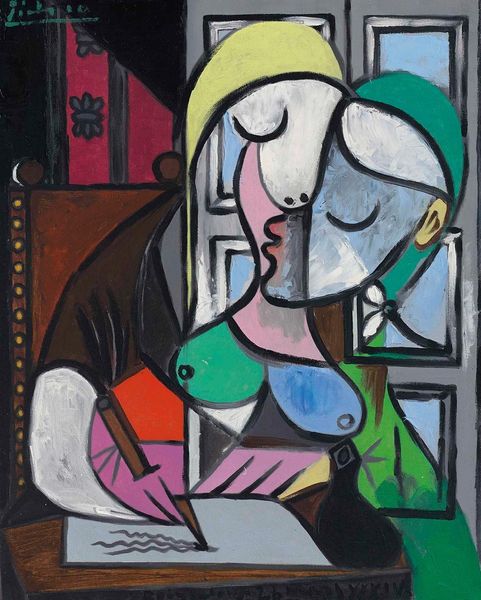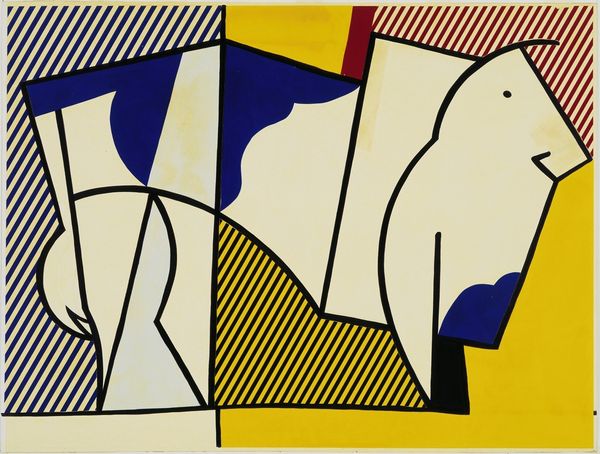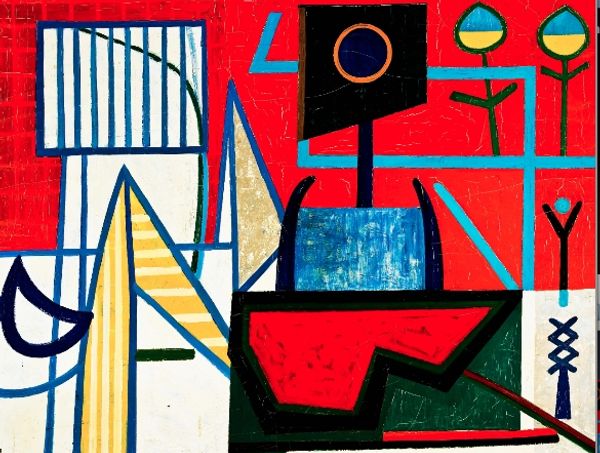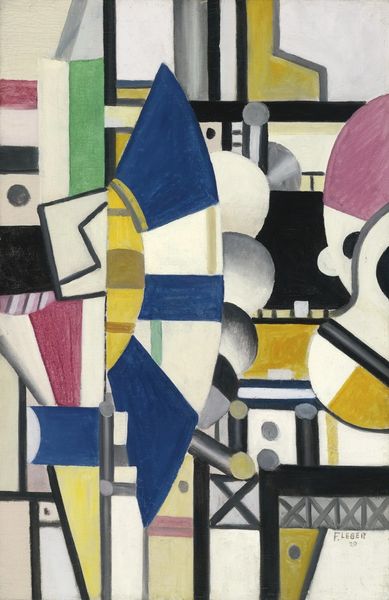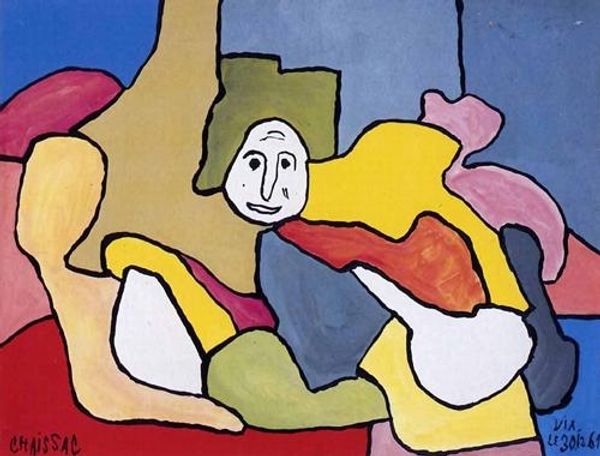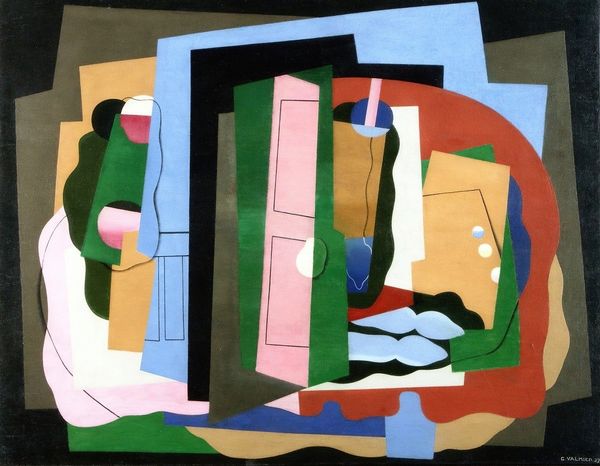
painting, oil-paint
#
portrait
#
cubism
#
painting
#
graffiti art
#
oil-paint
#
pop art
#
expressionism
#
abstraction
#
portrait art
#
modernism
Copyright: Modern Artists: Artvee
Curator: The painting we’re looking at is Pablo Picasso’s "La fenêtre ouverte," or "Open Window," completed in 1929. Picasso worked primarily in oil paint for this piece, creating a work that defies easy categorization. Editor: Immediately, I'm struck by the tension. There's this sense of confinement battling against openness, suggested not just by the title but also by the juxtaposition of stark geometry with fragmented imagery. Curator: It's a pivotal moment in Picasso's career, positioned during the interwar years in Europe. We see Cubism moving towards a more fluid, surreal style. Consider how socio-political unrest influenced his approach. Editor: The window as a motif has always signaled societal anxieties. Think about the implications of surveillance, censorship, even class disparity at this historical junction. It really hits home here! Curator: I find it fascinating that Picasso uses an open window—usually symbolic of freedom—but traps it with geometric constraints. It evokes alienation from a collective humanity amid looming conflict. Editor: Look at how deliberately disruptive the color palette is. It's not aiming for harmony, but for some raw emotion! He's disrupting conventional portraiture with stark whites. A disruption, it feels deliberate. Curator: Precisely! And the fractured perspectives deny us any cohesive narrative. The artist intentionally leaves us grappling with the disjointed nature of identity, perhaps hinting towards inner psychological states in times of unrest. Editor: It leaves you to examine not only your views, but Picasso's relationship with gender. Whose fragmented reality are we truly perceiving? It might be fruitful to approach these as studies on visibility in that time, specifically feminine visibility within surrealist circles. Curator: I would only say that he offers us an opportunity to engage in art's ongoing ability to shape—and mirror—our cultural understanding of what it means to be human amid an overwhelming period in our history. Editor: Agreed. Picasso compels a necessary dialogue, reminding us to remain attentive toward these layered interpretations that echo, or warn against, potential disruptions, either within or surrounding our own viewpoints.
Comments
No comments
Be the first to comment and join the conversation on the ultimate creative platform.
